In Gilmanton, A Hidden History Revealed
Have you ever walked or ridden along a quiet rural road in New Hampshire and imagined what you’d see if you could travel back in time? Take a look at this photo:
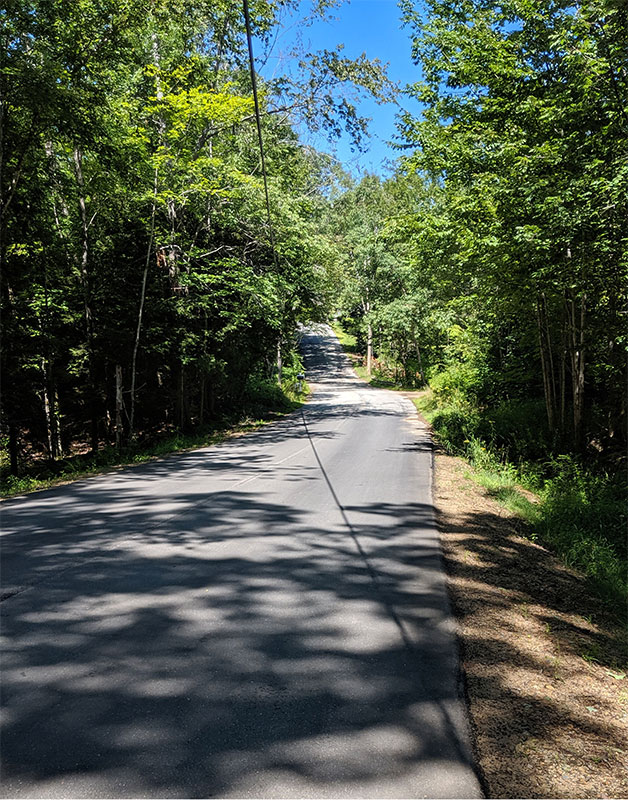
Just a typical quiet, wooded New Hampshire backcountry road, right? You are looking toward the intersection of Meadow Pond, Loon Pond and Stockwell Hill Roads in Gilmanton, the location of one of Five Rivers newest conserved properties, a conservation easement donated by Graham Wilson and Gina Sapiro.
Let’s go back in time almost 150 years. The next photo was taken in about 1880 from about the same spot.
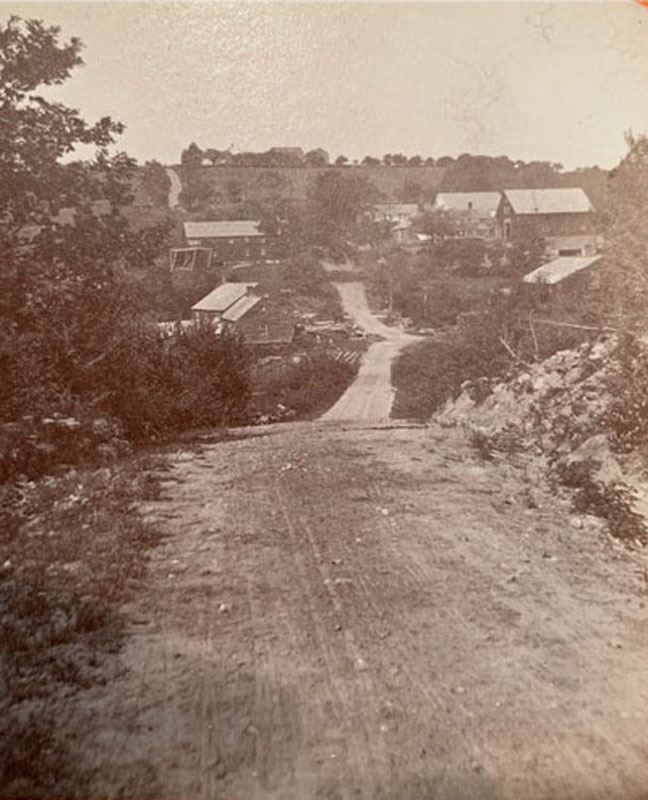
Quite an astonishing change! This photo shows the vibrant and productive Jones Mills community, with the Jones farmhouse at the top right by the road, along with a variety of mills, residences, and a long factory building on the left constructed over a gorge near Academy Brook.
In 1880, all the buildings visible in this photo were located on what is now the 164-acre Wilson-Sapiro property, conserved by Five Rivers in December 2018. Last month in August, we hosted an afternoon educational event at the property where participants learned about the site’s natural and human history. Architectural historian James Garvin brought to life the once-vital Jones mills complex.
The Jones mills were established by James Jones (born 1775). By 1845, the industrious family had constructed a series of four separate dams along Academy Brook to power two gristmills, one sawmill, and several shingle mills, clapboard machines, and a linseed oil mill.
Although a severe flood in 1848 destroyed most of the industrial complex, the Jones family was back in business by 1850, turning to carriage and wagon making. The 1880 photo above shows the mill community at its peak: a saw mill, multiple carriage shops, a paint shop, a trim shop, a wheelwright shed, and a cooper shop.
The Jones mill community was more than a complex of industrial buildings—maps from 1860 and 1892 are dotted with the homes of the Jones family, as well as those of their employees and other mill owners. Directly behind the Jones farmhouse stood a one-room schoolhouse (see photo below).
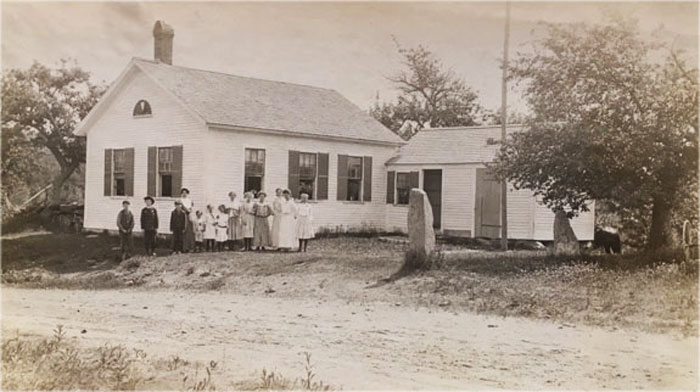
In 1880, Jones Mills was an important and active self-contained community that provided employment, housing, education, and social unity in this part of Gilmanton.
But after 140 years, all the mill buildings, carriage shops, and other industrial structures are gone, with the surrounding fields returned to forests. Today, only a few foundations and the 18th-century Jones family farmhouse remain.
By conserving the 164 acres of this beautiful and historic property, Wilson and Sapiro and Five Rivers have ensured that the land and its history are preserved forever. “Conservation land always has a natural value, but in New Hampshire, the land often has a historical and human value as well,” says architectural historian James Garvin. Graham and Gina’s property is a perfect example.
Property owner Graham Wilson writes: “The land and, we hope, the house will endure long after we have gone. The conservation easement we have signed with Five Rivers recognizes this underlying reality. It makes it more certain that others in the future will enjoy the beauty, peace, and charm that our land provides. It gives owners who come after us the chance to be part of that long chain of people stretching back before the creation of these United States through to today and into the future.”
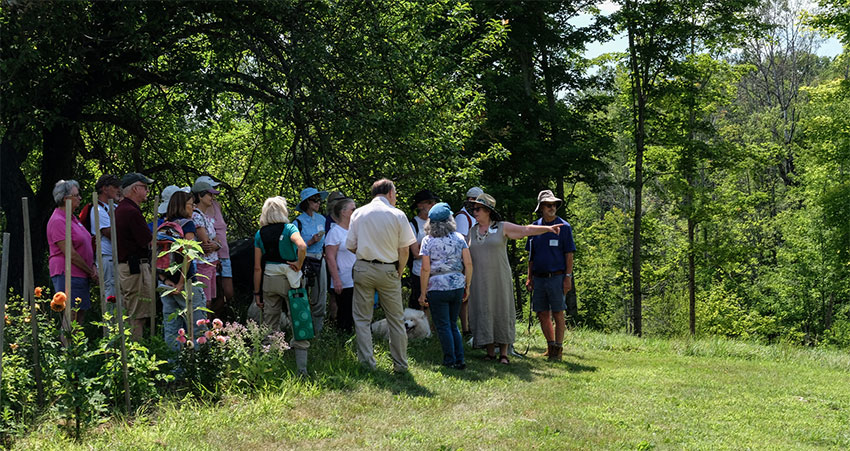
During Five Rivers’ educational walk at the Wilson-Sapiro property on August 18th, property owner Gina Sapiro talked about the 18th-century antique Cape built by the Jones family that she and Graham now call home, and showed us her extensive gardens that provide produce and flowers for Gilmanton’s Own Cooperative Market located in the Four Corners Brick House in Gilmanton Center.
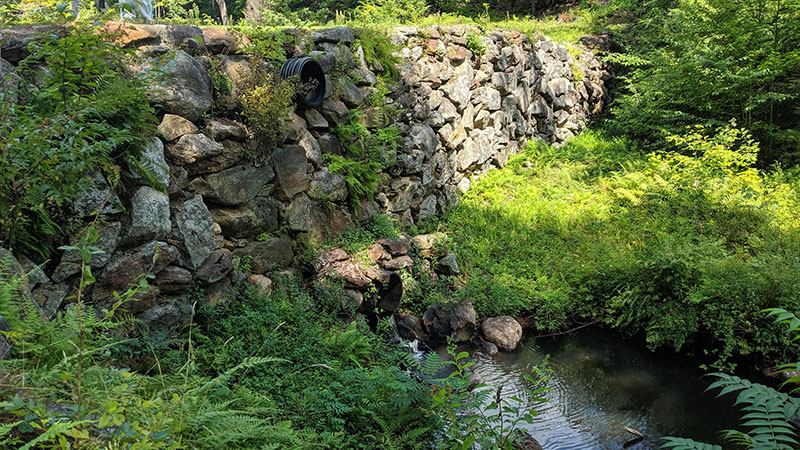
Existing stone and earth wall of one of the four dams that fed the Jones mills during the 19th century.
Graham and Gina will continue to own and management property for conservation purposes, and Five Rivers will monitor activities on the land to ensure that it is never developed. When Graham and Gina transfer the land to a new owner, Five Rivers will work with the new owners (and all future owners) to ensure that this special place remains conserved.



